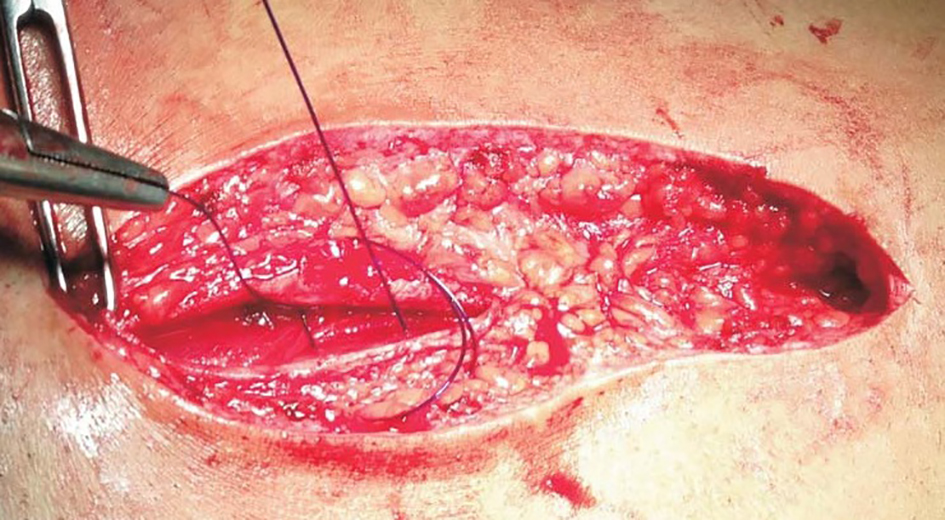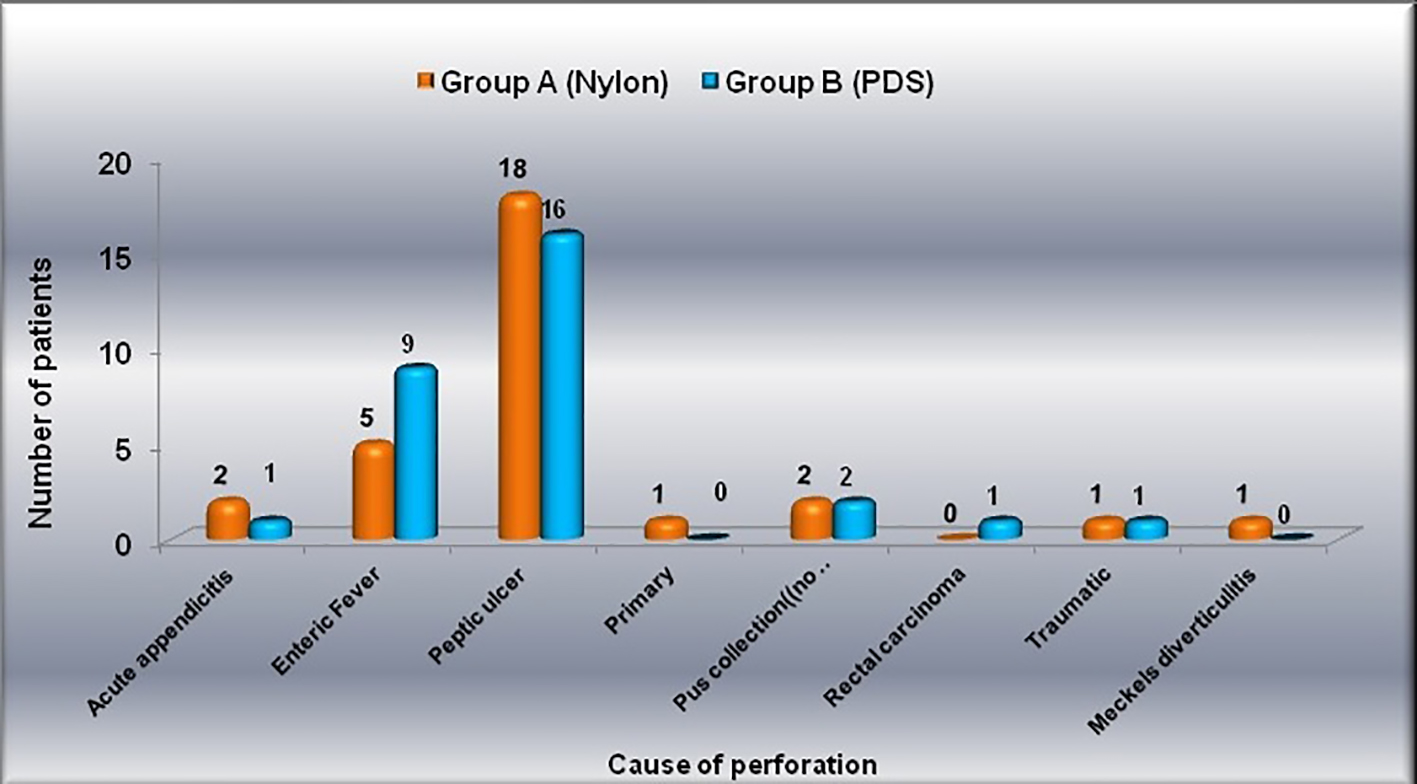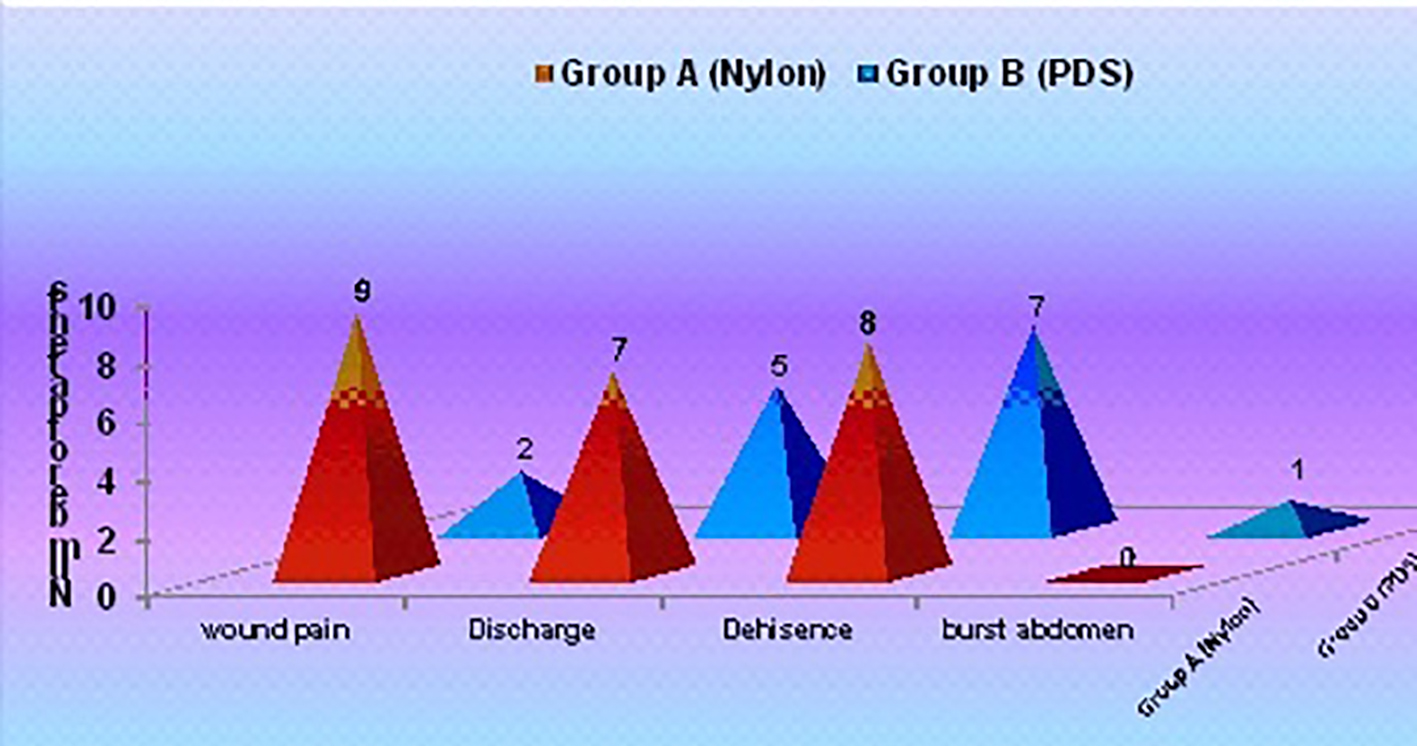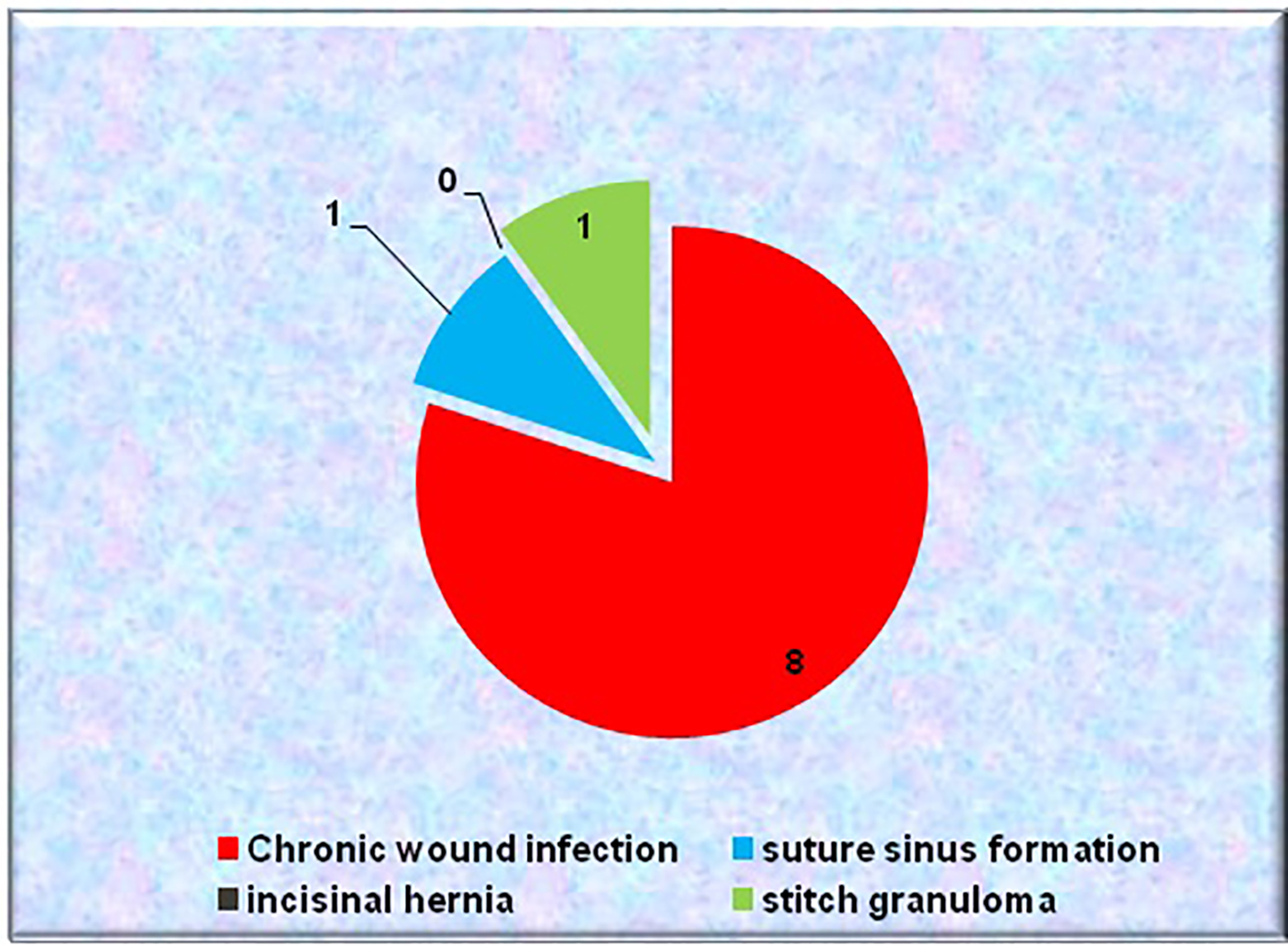
Figure 1. Bite is taken 1.5 cm from cut edge of linea alba on the opposite side.
| Journal of Current Surgery, ISSN 1927-1298 print, 1927-1301 online, Open Access |
| Article copyright, the authors; Journal compilation copyright, J Curr Surg and Elmer Press Inc |
| Journal website http://www.currentsurgery.org |
Original Article
Volume 6, Number 3-4, December 2016, pages 65-72
A Comparative Study of Polydioxanone and Nylon for Abdominal Wall Closure With Interrupted Figure of Eight in Peritonitis Cases
Figures





Tables
| Site of perforation | Age of patients (in years) | |||||
|---|---|---|---|---|---|---|
| 11 - 20 | 21 - 30 | 31 - 40 | 41 - 50 | 51 - 60 | > 60 | |
| Appendicular perforation | 3 | 0 | 0 | 0 | 0 | 0 |
| Duodenal perforation | 3 | 4 | 1 | 1 | 2 | 3 |
| Gastric perforation | 0 | 0 | 1 | 2 | 0 | 4 |
| Ileal perforation | 6 | 6 | 0 | 0 | 1 | 0 |
| Jejunal perforation | 0 | 1 | 1 | 0 | 0 | 0 |
| Meckel’s diverticulum | 1 | 0 | 0 | 0 | 0 | 0 |
| Pre-pyloric perforation | 0 | 1 | 5 | 0 | 1 | 0 |
| Primary peritonitis | 1 | 1 | 2 | 1 | 0 | 0 |
| Pyloric perforation | 0 | 1 | 2 | 2 | 1 | 1 |
| Sigmoid perforation | 0 | 0 | 0 | 1 | 0 | 0 |
| Wound outcomes | Group A: polyamide (nylon) | Group B: polydioxanone (PDS) | ||
|---|---|---|---|---|
| Total cases: 30 | P-value | Total cases: 30 | P-value | |
| Pain | 9 | 2.601 | 2 | 0.106 |
| Discharge | 7 | 0.104 | 5 | 0.746 |
| Wound dehiscence after 3 weeks | 8 | 0.000 | 7 | 1.000 |
| Burst abdomen | 0 | 0.000 | 1 | 1.000 |
| Chronic wound infection | 1 | 1.017 | 0 | 1.000 |
| Suture sinus | 1 | 1.017 | 0 | 1.000 |
| Incisional hernia | 0 | 0 | ||
| Stitch granuloma | 1 | 1.017 | 0 | 1.000 |
| Study | Wound pain |
|---|---|
| Van’t et al [2] | P < 0.005 |
| Docobo-Durantez et al [3] | P < 0.01 |
| Khan et al [4] | P = 0.001 |
| Present study | P = 0.1046 |
| Study | Wound discharge |
|---|---|
| Khan et al [4] | 24.0% (prolene) and 16.0% (PDS) |
| Seiler et al [5] | 12.7%, 19.4%, and 16.3% |
| Altaf et al [5] | 6.61% and 5.7% |
| Hisham et al [7] | 28.6% and 25% |
| Present study | 23.3% and 16.7% |
| Study | Sutures sinus formation |
|---|---|
| Sajid et al [8] | 1.04% and 0.07% |
| Khan et al [4] | 16.0% (prolene) and 2.0 (PDS) |
| Yadav and Garg [9] | 3.5% |
| Present study | 3.3% and 0% |
| Study | Non-absorbable group | Delayed absorbable group |
|---|---|---|
| Khan et al [4] | 8.0% | 4.0% |
| Bloemen et al [10] | 3.5% | 4.7% |
| Yadav and Garg [9] | 13.2% | 10.4% |
| Altaf et al [6] | 4.34% | 0.73% |
| Israelsson and Jonsson [11] | 15.7% | 15.1% |
| Present study | 0% | 0% |